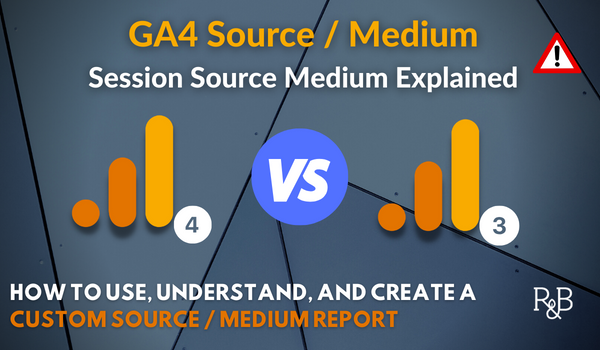Comprehending Secondary Dimensions in Google Analytics: What is a Secondary Dimension and How It Enhances Information Evaluation
Comprehending Secondary Dimensions in Google Analytics: What is a Secondary Dimension and How It Enhances Information Evaluation
Blog Article
Unveiling the Effect of Second Measurement in Google Analytics on Data Evaluation and Insights
In the realm of information analytics, the application of secondary dimensions within Google Analytics has actually arised as a pivotal tool for extracting deeper understandings and unraveling complicated patterns that might or else remain obscured. By peeling off back the layers of main information collections, secondary measurements provide a nuanced perspective that enriches the understanding of customer behavior, web site performance, and the efficiency of advertising techniques. Nonetheless, real influence and untapped possibility of secondary measurements are frequently underestimated, outweighed by the appeal of key metrics. As we browse with the elaborate landscape of information analysis, the relevance of secondary measurements becomes significantly obvious, losing light on crucial information that hold the trick to notified decision-making and strategic optimizations.
Discovering the Idea of Secondary Dimensions
Secondary measurements in Google Analytics provide added insights by permitting customers to examine primary information in conjunction with a second characteristic. By including second measurements, users can dig much deeper into the information and reveal valuable connections that could or else go unnoticed - what is a secondary dimension in google analytics.
By discovering the numerous additional dimensions offered in Google Analytics, customers can open new insights and maximize their electronic advertising and marketing initiatives. In significance, second measurements offer as an effective device for enhancing information evaluation and driving workable outcomes.
Enhancing Data Analysis With Additional Dimensions
Having established the fundamental understanding of secondary measurements in Google Analytics and their critical duty in data evaluation, the emphasis now changes towards leveraging these second attributes to improve the interpretation of analytics data (what is a secondary dimension in google analytics). By integrating secondary dimensions right into information evaluation, analysts can acquire much deeper understandings right into user habits, internet site performance, and marketing performance

Moreover, second dimensions help in contextualizing main data metrics by offering added layers of details. This contextualization aids in understanding the 'why' behind the data trends, helping analysts make educated optimizations and choices to boost overall performance. Inevitably, incorporating secondary dimensions enriches the information interpretation procedure, leading to more purposeful insights and critical actions.
Revealing Hidden Insights Via Second Measurements
Exploring the depths of analytics data with second measurements reveals valuable insights that would certainly or else continue to be obscured. By integrating additional dimensions in Google Analytics, organizations can uncover covert patterns, trends, and connections that give a more comprehensive understanding of user habits and website performance. These extra layers of data enable analysts to dig much deeper right into the main measurements, such as traffic sources or touchdown web pages, and get an extra nuanced perspective on how different variables connect with each other.
Via the use of second dimensions, analysts can section and compare information throughout various dimensions, allowing them to determine certain aspects that affect customer involvement, conversion rates, and overall success metrics. By combining the main measurement of 'gadget category' with the second dimension of 'age group,' marketers can pinpoint which age demographics prefer accessing the site through mobile devices versus desktop computers.
Leveraging Additional Dimensions for Actionable Analytics
Structure upon the insights revealed with second measurements in Google Analytics, services can now harness this enriched data landscape to drive actionable analytics and calculated decision-making. By leveraging secondary measurements, organizations can dive deeper right into their data to draw out beneficial patterns, fads, and connections that may have previously gone undetected. This much deeper degree of evaluation allows companies to get a much helpful site more comprehensive understanding of individual actions, campaign efficiency, and overall web site performance.
One key advantage of making use of additional dimensions for workable analytics is the capacity to section information based on certain standards. This segmentation allows businesses to tailor their approaches and campaigns to various audience groups, causing extra targeted and reliable advertising and marketing initiatives - what is a secondary dimension in google analytics. Additionally, additional measurements give an even more alternative view of individual communications, making it possible for businesses to enhance their internet site content, design, and overall individual experience
Making The Most Of Decision-Making With Second Dimensions
To enhance calculated decision-making in analytics, leveraging secondary measurements in Google Analytics can supply a more nuanced perspective on customer actions and project efficiency. By integrating additional measurements right into information analysis, services can delve much deeper into the specifics of their web site visitors' communications and engagement patterns. This additional layer of info enables a more thorough understanding of exactly how various variables, such as demographics, tools, or website traffic resources, impact essential performance indications.

Verdict
In verdict, have a peek at this website the usage of additional measurements in Google Analytics plays an important function in improving information analysis and revealing surprise insights. By exploring this concept, one can obtain a deeper understanding of user habits and make notified choices based upon actionable analytics. Leveraging secondary measurements enables for a more comprehensive analysis of data and makes the most of the efficiency of decision-making processes.

Report this page